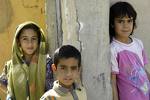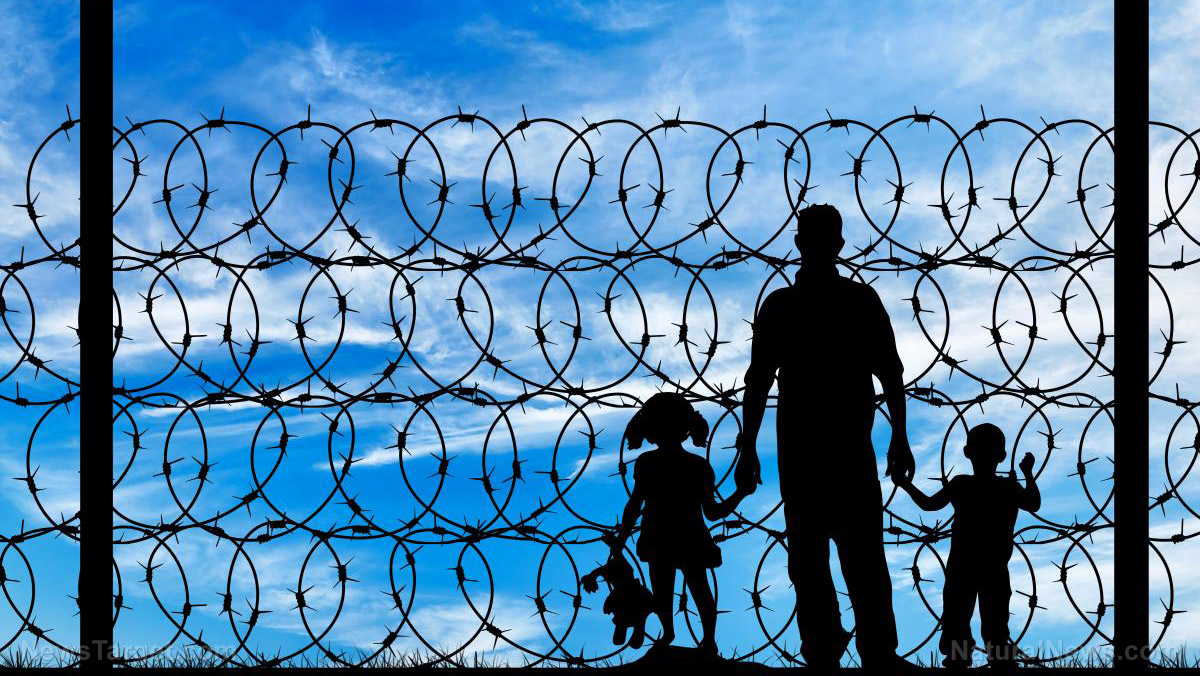Iraqi Children: Deprived Rights, Stolen Future

Of relevance to the current debate on the rights of children, Bie Kentane‘s presentation to a meeting at the United Nations, Palais des Nations, Geneva, March 15, 2013
For two decades, Iraqi children have been subjected to grave violations of human rights.Due to decades of war, foreign occupation and international sanctions, Iraq has turned into one of the worst places for children in the Middle East and North Africa with around 3.5 million living in poverty, 1.5 million under the age of five undernourished and 100 infants dying every day, (The UN Children’s Fund (UNICEF)(IRIN News, 2007).
This report will focus on the violations by the occupying forces and the Iraqi government of the Convention (IV) relative to the Protection of Civilian Persons in Time of War, Geneva, 12 August 1949, (ICRC) and the UN Convention on the Rights of the Child.
Article 28. Right to education,
Article 29. Goals of education. All children have the right to a primary education, which should be free.
Before 1990s, Iraq’s education system statistically surpassed its neighbours in terms of access, literacy and gender equality. However, almost three decades of wars, cruel sanctions and humiliated blockade have pushed back those advances(Jinan Hatem Issa, 2010).
The youth component of the Iraqi population is the fastest growing in the nation. Iraq had an estimated 30,399,572 people in 2011 according to the CIA World Factbook. The median age was 20.9, and 38% of the country was 14 or younger. Both of those statistics made Iraq the second youngest country in the Middle East and North Africa. This important element is obviously not being invested in, which could have detrimental affects upon Iraq’s future. One of the major problems with the Iraqi bureaucracy for example is a lack of trained staff. If many Iraqis are failing to gain even a basic education, this issue will likely not be solved any time soon (Wing, 2012).
The destruction or closing of schools and universities, the displacement of the population and the fact that teachers are members of the professional class who were killed or forced to leave Iraq, resulted in loss of schooling for children and young people, and therefore loss of life opportunities. Many children were displaced during the occupation due to sectarian policies imposed by the occupiers, with no adequate facilities for their schooling. Loss of schooling is very hard to make up. Not only did the children and young people have their opportunities in later life reduced, but the community and ultimately the state also loses from inadequate education.
In the last several decades, Iraq went from one of the best education systems in the region to a mediocre one. Wars and sanctions devastated the government’s ability to take care of its children. Today the school system is failing to educate a large number of kids, because of a mix of untrained teachers, lack of schools, and out of date methods.
A poll done in September 2011 found that only 34% of Iraqis were satisfied with their local schools, down from 66% in February 2009 (Wing, 2012).
Early Childhood Development
Analysis of four domains (Learning, Social-Emotional, Physical, Literacy numeracy ) shows that 95 percent of children are on track in the physical domain , but less on track in learning (89 percent), socio-emotional (78 percent) domains and strikingly less in literacy-numeracy (18 percent) domain.
In the domain of literacy-numeracy and learning the higher score is associated with children living in richest households and with older children; social-emotional skills are higher among girls(UNICEF, MICS, 2011).
Enrollment
Only four percent of children aged 36-59 months are attending pre-school. Figures give five percent in urban areas, compared to one percent in rural areas and in poor households.
Children living in the poorest households have lower ECDI (66 percent compared with 81 percent of the richest households) (UNICEF, MICS, 2011).
Socio-economic status appears to have a positive correlation with school readiness – while the indicator is only tree percent among the poorest households, it increases to 11 percent among those children living in the richest households.(UNICEF, MICS, 2011).
Net primary school enrolment rate is estimated at 87 percent overall, 91 percent for boys and 82 percent for girls (UCPD, 2011-2014). This is far below Iraq’s 2015 national Millennium Development Goal target of 98 per cent.
Of children who are of primary school entry age 6 in Iraq, 84 percent are attending the first grade of primary school. Children’s participation in primary school is higher in urban areas than in rural areas. A positive correlation with mother’s education and socio-economic status is observed. The majority of the children are attending school (90%). However, 10 percent of the children are out of school when they are expected to be participating in school (UNICEF, MICS, 2011).
The net primary completion rate [1] is 44 percent. There is a higher net completion rate among children in urban areas (50%) than in rural areas (33 %). As mother’s education and wealth increases, the net completion also increases markedly.
Only about half of the children of secondary school age are attending secondary school (49 percent).Of the remaining half some of them are either out of school or attending primary school.One in seven of the children of secondary school age are attending primary school when they should be attending secondary school while the remaining 38 percent are not attending school at all.
The results show clear association between mother’s education and household wealth on secondary school net attendance ratio.The ratio is 38 percent for children with uneducated mothers and increases to 73 percent for children whose mother’s education is secondary or higher.
Moreover, secondary school net attendance ratio increased from 25 percent at the poorest households to 75 percent at the richest household(UNICEF, MICS, 2011).
Print



